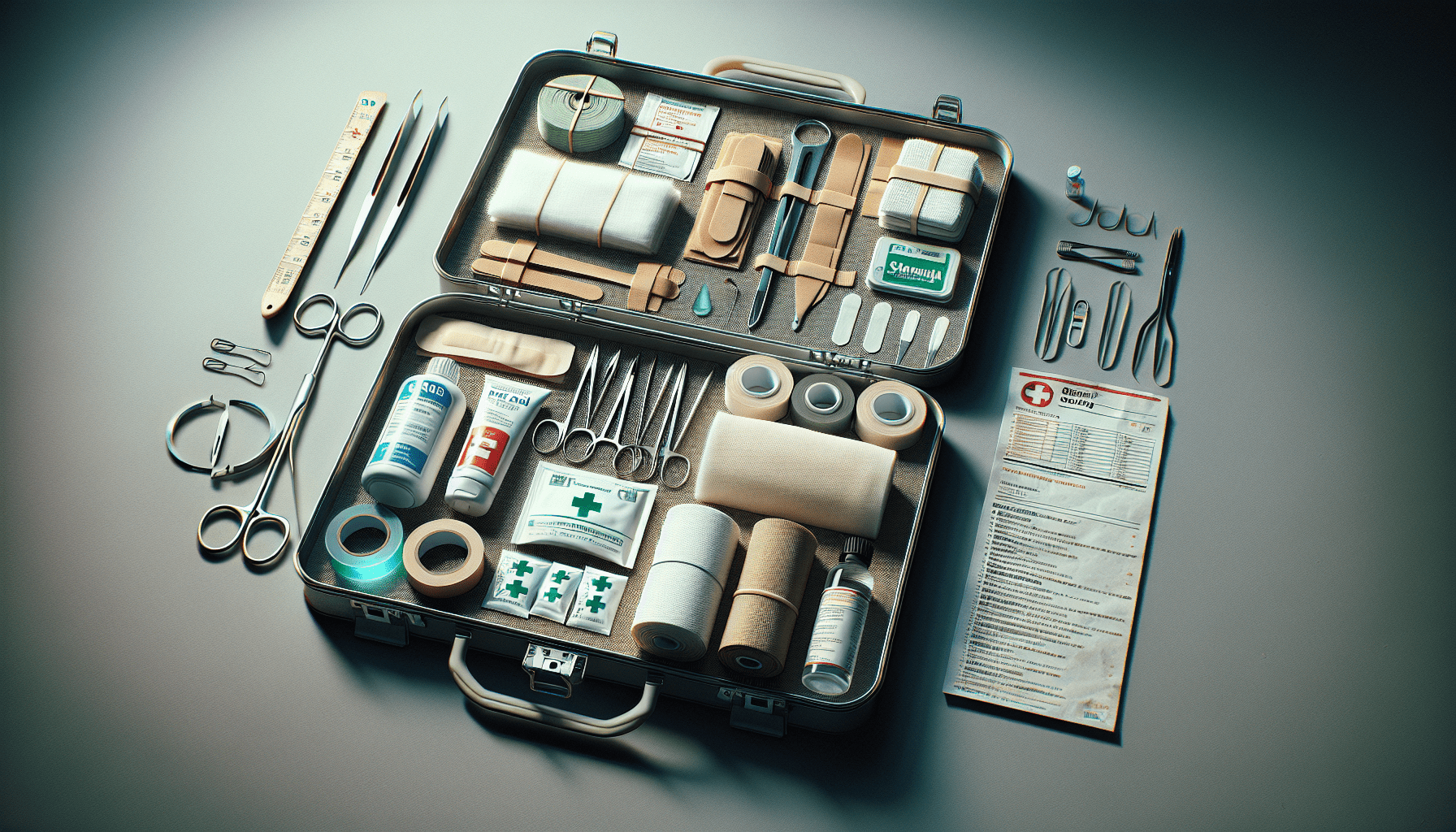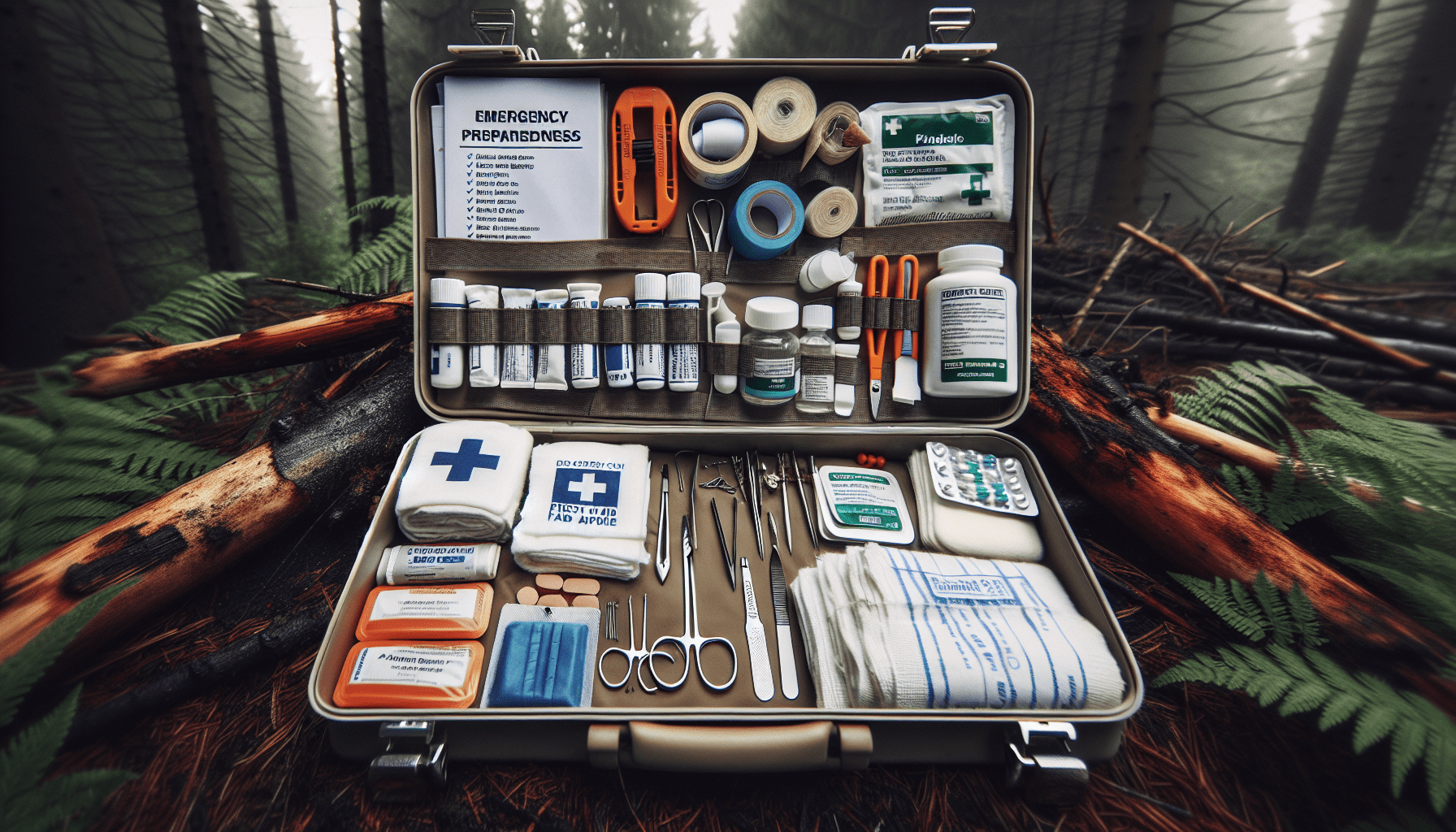In today’s unpredictable world, being prepared for any emergency situation is essential. Whether you’re an experienced prepper or just starting out, having a solid understanding of first aid is crucial. This article will provide you with key tips for prepper first aid, helping you become more confident and capable in handling medical emergencies. From basic wound care to dealing with fractures and sprains, these tips will equip you with the knowledge you need to effectively respond to any injury or illness when professional medical help is not readily available.
1. Assemble a First Aid Kit
When it comes to preparing for emergencies, one of the first steps you should take is to assemble a first aid kit. Your kit should include essential supplies that can come in handy during times of injury or illness. Some of the basic items you should include are adhesive bandages, gauze pads, adhesive tape, scissors, tweezers, antiseptic wipes, and disposable gloves. These supplies can be instrumental in treating cuts, scrapes, and minor wounds.
However, it’s also important to consider specific needs that you or your group members may have. For example, if someone in your group has a chronic condition such as allergies or asthma, it would be wise to include necessary medications and medical supplies in your first aid kit. Additionally, if you’ll be traveling to a remote or wilderness area, you may want to consider packing items like snakebite kits or camping-specific medical supplies.
It’s crucial to regularly check and update your first aid kit. Check your supplies periodically to ensure they are still in good condition and not expired. Replace any items that have been used or are no longer effective. This way, you can have peace of mind knowing that your first aid kit is always well-stocked and ready to be used in case of an emergency.
2. Educate Yourself
Having a well-stocked first aid kit is important, but it’s equally essential to educate yourself on basic first aid skills. Knowing what to do and how to respond in an emergency can make a significant difference in the outcome. There are several ways you can improve your knowledge and skills in first aid.
Start by learning basic first aid skills. This can include knowing how to properly clean and dress wounds, perform CPR, and provide basic life support. Understanding these fundamental skills can help in many emergency situations and potentially save lives.
Taking a first aid course is highly recommended. These courses are often available through local organizations, community centers, or healthcare providers. They are designed to provide comprehensive training on first aid techniques and equip you with the skills needed to respond effectively in various emergency scenarios.
In addition to taking a first aid course, it’s crucial to stay updated on medical information and techniques. Medical practices and guidelines are constantly evolving, so it’s important to stay informed about the latest advancements. Stay connected with reputable medical sources, read books and articles, and engage in online forums or communities that discuss first aid and emergency medicine.

3. Prioritize Safety
When faced with an emergency situation, it’s essential to prioritize safety for both yourself and the injured individual. Before providing any aid, take a moment to assess the situation carefully. Is there any ongoing danger or risk that needs to be addressed first? Ensuring your own safety and the safety of others is paramount.
Taking precautions to protect yourself is crucial. Always wear appropriate personal protective equipment (PPE), such as disposable gloves, when providing first aid. This helps prevent the transmission of infections or diseases, especially when dealing with bodily fluids or open wounds.
It’s also important to provide first aid within your capabilities. While it’s admirable to want to help others, it’s essential to be realistic about your own skills and limitations. Knowing when to seek additional help or contact emergency services is key. Remember, providing initial care and stabilizing the injured is often the primary goal until professional help arrives.
4. Build a Medical Reference Library
Building a medical reference library can be incredibly valuable for prepping and first aid purposes. Gather books on first aid and emergency medicine that provide detailed explanations and step-by-step instructions. These resources can serve as a reference when facing unfamiliar situations or when medical assistance is not immediately available.
Consider including books on natural remedies and alternative medicine as well. While conventional medical practices are widely accepted and often the go-to choice, having knowledge of natural remedies and alternative methods can be beneficial in situations where traditional medicine may not be readily accessible. However, it’s essential to understand when and how to utilize these alternative methods safely and effectively.
Having a comprehensive medical reference library allows you to access information even when communication or internet access is limited. It serves as a valuable tool in making informed decisions and providing appropriate care during emergencies.

5. Practice First Aid Scenarios
Once you have assembled a first aid kit and gained knowledge through courses and references, it’s crucial to put those skills into practice. Simulating emergency situations allows you to test your skills and response time, helping you identify areas for improvement and build confidence in your abilities.
Create scenarios that mimic real-life emergencies and practice responding to them. This can include scenarios like treating a severe cut, providing CPR, or responding to a choking incident. By practicing these scenarios, you’ll be better prepared to handle the stress and pressure of a real emergency.
Testing your skills and response time in simulated scenarios is an excellent way to bridge the gap between theoretical knowledge and practical application. It helps build muscle memory and ensures that you can confidently and efficiently provide first aid when it matters most.
6. Consider Special Needs and Medications
When planning for emergencies, it’s crucial to consider any special needs or medical conditions that you or your group members may have. Take into account any chronic conditions or allergies and ensure that your first aid kit is stocked with necessary medications and medical supplies.
For example, if someone in your group has a severe allergy, make sure to include an epinephrine auto-injector in your first aid kit. If anyone requires regular medication, have a sufficient supply on hand and rotate it to prevent expiration.
Moreover, it’s essential to plan for potential complications that may arise due to specific medical conditions. Educate yourself about the emergency management of these conditions and have a clear plan in place. Thinking ahead and being prepared can significantly improve the outcome in emergency situations.
7. Maintain Communication and Documentation
During emergencies, effective communication is key. Establish a communication plan with your group or family members to ensure that everyone is on the same page and can stay connected. This plan should include designated meeting points, emergency contact information, and a system for communicating important updates or changes in the situation.
In addition to communication, it’s essential to keep records of treatments and medications. Documenting the care provided can be valuable for future reference, especially if long-term medical attention is required or if you need to provide a report to medical professionals. Keeping a record also helps identify any patterns or trends in injuries or illnesses within your group.
Lastly, make sure you have emergency contact information readily available. This includes phone numbers for emergency services, local hospitals, and trusted healthcare providers. Having this information readily accessible can save precious time during emergencies.
8. Adapt to Different Environments
Preparing for emergencies means being able to adapt to different environments. Depending on the situation, you may find yourself in various settings, such as the wilderness, urban areas, or extreme climatic conditions. Each environment introduces unique challenges and requires adjustments to your first aid strategies.
If you plan to venture into the wilderness, consider the potential risks and challenges you may face. Familiarize yourself with specific first aid techniques for snakebites, insect stings, or other outdoor-related injuries. Pack items like tourniquets, compact splints, or water purification tablets to address those specific challenges.
Similarly, if you anticipate being in urban areas, be prepared to encounter different types of injuries, such as accidents involving vehicles or industrial incidents. Understanding how to assess and manage these situations can make a significant difference in the outcome.
Climate-related challenges must also be taken into account. Extremely hot or cold temperatures can have an impact on how you respond to emergencies and the types of injuries or illnesses that may arise. Consider how you can adapt your first aid strategies in extreme weather conditions.
9. Consider Alternative Methods and Remedies
As part of your prepper first aid preparations, it’s worth exploring alternative methods and remedies. Natural remedies and traditional healing practices can provide viable options when conventional medical resources are limited or unavailable.
Take the time to learn about herbal medicine and essential oils. Understanding the properties and uses of various plants and oils can be beneficial in certain situations. However, it’s essential to have a deep understanding of their safety, potential interactions, and contraindications.
While alternative methods can be useful, it is crucial to know when to utilize conventional methods. There will be situations where the use of modern medicine and medical equipment is necessary for the best outcome. Balancing traditional and alternative practices with conventional medicine is key to providing effective care in various emergency scenarios.
10. Stay Calm and Confident
Lastly, one of the most important aspects of providing first aid is to stay calm and confident. In high-stress situations, your composure can make a significant difference in the outcome. Maintain a calm and reassuring demeanor, both for yourself and for the injured individual.
Providing reassurance to the injured can help alleviate anxiety and promote a sense of security. Let them know that help is on the way or that you are doing everything you can to provide the necessary care. Simple words of reassurance can have a powerful impact on their mental and emotional well-being.
Above all, stay confident in your abilities. The knowledge and skills you have acquired through education and practice will serve you well in emergencies. Trust yourself and your training, and remember that you are capable of making a difference in someone’s life during a critical moment.
By following these tips and taking the necessary steps to prepare for emergencies, you can become a valuable asset in providing first aid. Your knowledge, skills, and level-headedness can make all the difference in a time of crisis. So take the time to assemble your first aid kit, educate yourself, practice scenarios, and be confident in your abilities. You never know when you may need to step up and be the one to provide life-saving care.
